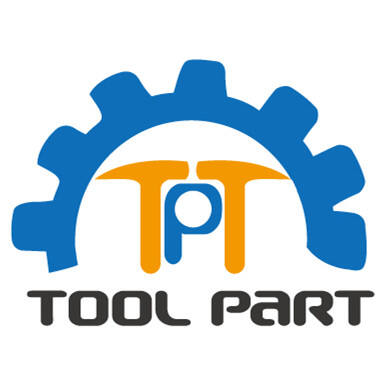Suprasti Esminius Statybinių Kaltų Komponentus
Kai kalba eina apie statybos darbus, turėti tinkamą įrankį darbui yra svarbu, ir vamzdynai nėra išimtis. Įvairios kalto dalys atlieka skirtingas roles, kad kiekvienas tipas būtų tinkamas konkrečioms statybos užduotims. Nuo galvos dizaino iki rankenos medžiagos, kiekviena detalė turi savo paskirtį, kad būtų pasiektas optimalus našumas skirtingose aplikacijose.
Profesionalūs statytojai ir amatai supranta, kad tinkamo plaktuko naudojimas gali žymiai paveikti darbo kokybę ir našumą. Specializuotos plaktuko dalys sukurtos atitikti įvairių statybos veiklų, nuo rėmų statymo iki apdailos darbų, mūrijimo iki metalo apdirbimo, unikalius reikalavimus.
Dažniausiai naudojami statybos plaktukai ir jų sudėtinės dalys
Rėmų plaktuko sandara
Rėmų plaktukai turi išskirtines konstrukcines dalis, sukurtas atlaikyti sunkiausias statybos sąlygas. Galvutės svoris paprastai yra nuo 16 iki 32 uncijų, o jos veidas yra tiesus arba su grioveliais, kad būtų užtikrintas geresnis vinies sukibimas. Ištrauktuvė yra ilgesnė ir tiesesnė lyginant su kitomis rūšimis, todėl yra galima lengvai pašalinti vinis iš medžio. Kotas, kuris gali būti pagamintas iš plieno, stiklo pluošto ar medžio, yra ilgesnis, kad būtų suteikta maksimali jėga intensyvios rėmų statymo operacijos metu.
Rėmimo plaktukų kaklo konstrukcija apima papildomą sustiprinimą, kad būtų išlaikytos pakartotinės aukštos įtampos jėgos, atsirandančios rėmimo statyboje. Daugelyje modernių versijų plaktuko dalyse yra magnetiniai vinų pradėjimo įrenginiai ir virpesių slopinimo funkcijos, skirtos padidinti vartotojo patogumą naudojant ilgiau.
Baigiamojo plaktuko konstrukcija
Baigiamieji plaktukai integruoja tobulesnes plaktuko dalis detaliai staliaus darbams. Galvutė paprastai yra lengvesnė, sverianti nuo 12 iki 16 uncijų, su lygia puse, kad būtų išvengta paviršiaus žymėjimo. Nagas turi ryškesnį lankstą, kuris idealiai tinka tiksliniam vinims pašalinti iš apdailos darbų. Kotas paprastai yra trumpesnis, kad būtų lengviau valdyti apribotose erdvėse.
Šie plaktukai dažnai apima specialius kibumo medžiagos ir ergonomiškai suformuotus elementus tarp plaktuko dalių, kad būtų užtikrintas tikslus valdymas, reikalingas baigiamajam staliui. Balanso taškas yra kruopščiai sukurtas taip, kad būtų pasiektas optimalus svorio pasiskirstymas detaliems darbams.

Specializuoti kūjai mūrijimo darbams
Kūjo savybės
Kūjai yra sukonstruoti su unikaliomis kūjo detalėmis, sukurtomis specialiai mūrijimo darbams. Galvutė sujungia plokščią smūginį paviršių su kirviško formos uodega, skirta plytoms skaldyti ir apdirbti. Vien tik medžiagos, iš kurios pagamintas kotas, turi būti atspari mūrijimo darbų mechaniniam poveikiui ir užtikrinti tvirtą gniaužtą net esant dulkėtoms sąlygoms.
Šių specializuotų kūjų kaklo ir galvutės sujungimo vieta yra sustiprinta, kad atlaikytų apkrovas, atsirandančias pjūnant ir formuojant plytas. Kūjo dalių svorio pasiskirstymas yra kruopščiai apskaičiuotas taip, kad smūgiai būtų tikslūs, o vartotojo nuovargis – kuo mažesnis.
Mūrininko kūjo konfigūracija
Masono kūjai turi išskirtines kūjo dalis, kurios yra optimizuotos dirbant su įvairiomis rūšimis akmenų ir betonu. Galva dažniausiai apima kvadratinį smūgio paviršių įrankiams ir smailų kūjinį galą brūkšnių linijoms daryti ar perteklinės skiedinio masės pašalinimui. Koto ilgis ir medžiagos pasirinkimas yra orientuotas tiek į ilgaamžiškumą, tiek į tikslų valdymą.
Pažengę masono kūjai gali turėti smūgių sugeriančius elementus kūjo dalyje, kad būtų sumažintas vibracijos patekimas į vartotoją. Galvos ir koto tvirtinimo sistema sukuriama taip, kad atlaikytų stiprius smūgius, susijusius su mūrijimo darbais, išlaikant tikslų alinavimą.
Metalo apdirbimo kūjo techniniai duomenys
Rutulinio kūjo konstrukcija
Rutuliniai kūjai turi specializuotas kūjo dalis metalo apdirbimo sritims. Galva turi plokštį paviršių bendram smūkiui ir apvalų kūjinį galą metalo formavimui. Koto ilgis skiriasi priklausomai nuo paskirties – trumpesni modeliai skirti tikslumui, o ilgesni – padidintai galiai.
Kaltės galvutės plieno sudėtis yra kruopščiai parenkama, kad būtų užtikrinta būtina kietumo metalo apdirbimui, o taip pat išvengta pernelyg didelio nubrozdinimo ar nubroškimo. Kaltės dalys yra surinkamos ypatingai dėmesį skiriant galvutės saugumui, nes jos atsileidimas naudojimo metu gali būti pavojingas metalo apdirbimo srityje.
Kryžminės kaltės konstrukcinės dalys
Kryžminės kaltės apima išskirtines kaltės dalis, kurios atitinka specializuotus metalo apdirbimo uždavinius. Galvutė viename gale turi standartinį smūginį paviršių, o kitame – pjūklinį kūgį, kuris yra statmenas kaltės kotui. Tokia konfigūracija leidžia atlikti tiek bendrą smūgiavimą, tiek tikslų metalo paskleidimą.
Koto pritvirtinimo metodas ir šių kaltės dalių medžiagos yra sukurtos taip, kad atlaikytų šonines jėgas, atsirandančias kryžminio kūgio naudojimo metu. Balansas ir svorio pasiskirstymas yra optimizuoti, kad būtų užtikrintas kontroliuojamas smūgis metalo apdirbimo taikymo srityse.
Šiuolaikinės inovacijos kaltės konstrukcijoje
Pažengusios medžiagos ir komponentai
Šiuolaikiniai plaktukų modeliai integruoja inovacines plaktukų dalis, kurios padeda padidinti našumą ir ilgaamžiškumą. Kompozitinės medžiagos, titano lydiniai ir pažengę polimerai naudojami kuriant lengvesnius, tačiau stipresnius įrankius. Antivibracinės technologijos integruojamos į kotus ir smūgio paviršius, kad būtų sumažintas vartotojo nuovargis ir galimos sužalojimai.
Gamybos procesai tobulėjo, kad būtų sukurtos tiksliau parinktos ir nuoseklūs plaktukų dalys, kurios užtikrina geresnį balansą ir ilgaamžiškumą. Pažengusios apsauginės dengimo technologijos saugo metalines dalis nuo korozijos ir sumažina priežiūros reikalavimus.
Ergonomikos tobulinimas
Šiuolaikiniai plaktukų modeliai svarbiausią dėmesį skiria vartotojo patogumui, sukurdami kruopščiai suprojektuotas plaktukų dalis. Kotų konstrukcijos integruoja pažengusius sukibimo raštus ir medžiagas, kurios užtikrina tvirtą laikymą, tuo pačiu mažina rankų nuovargį. Mases paskirstymas yra optimizuojamas naudojant kompiuterinį modeliavimą, kad būtų užtikrintas efektyviausias smūgio veikimas su minimalia vartotojo pastanga.
Išmaniaosios technologijos pradeda atsirasti brangių kūjų versijoje, kurios integruotos jutikliai stebi smūgio jėgą ir tikslumą. Šios naujovės kūjų dalyse atspindi statybos įrankių ateitį, žadėdamas padidintą našumą ir saugumą.
Dažniausiai užduodami klausimai
Kaip pasirinkti tinkamą kūjo svorį mano statybos darbams?
Pasirinkite kūjo svorį pagal savo konkrečią užduotį ir fizinę būklę. Bendrosioms statybos darbams tinka 16–20 uncijų kūjis, kuris yra universalus. Baigiamiesiems darbams dažniausiai reikia lengvesnių 12–16 uncijų kūjų, o rėmų statymui gali prireikti 20–32 uncijų modelių. Norėdami išvengti nuovargio, atsižvelkite į naudojimo dažnumą ir trukmę renkantis svorį.
Koks koto medžiaga geriausiai atlaiko sunkų statybos darbą?
Plieno ir stiklo pluošto rankenos paprastai siūlo geriausią ilgaamžiškumą sunkiosios klasės statybos darbams. Plienas suteikia maksimalų stiprumą, tačiau gali perduoti daugiau vibracijos, o stiklo pluoštas siūlo puikų ilgaamžiškumą kartu su geresniu smūgių sugėrimu. Medinės rankenos yra tradicinės ir patogios, tačiau sunkaus darbo sąlygose jos gali reikalauti dažnesnio keitimo.
Kaip dažnai reikėtų tikrinti plaktuko dalių nubrozdinimus ar pažeidimus?
Profesionalūs rangovai turėtų tikrinti plaktuko dalis prieš kiekvieną naudojimą, ypač atkreipiant dėmesį į galvos ir rankenos jungtį bei bet kokius požymius, kad smūgio paviršius yra nubrozdintas ar sugadintas. Reguliariai naudojant, reikėtų atlikti išsamią apžiūrą kartą per savaitę, tikrinant atsileidusias dalis, įtrūkimus ar deformacijas, kurios gali pakenkti saugumui ar našumui.

